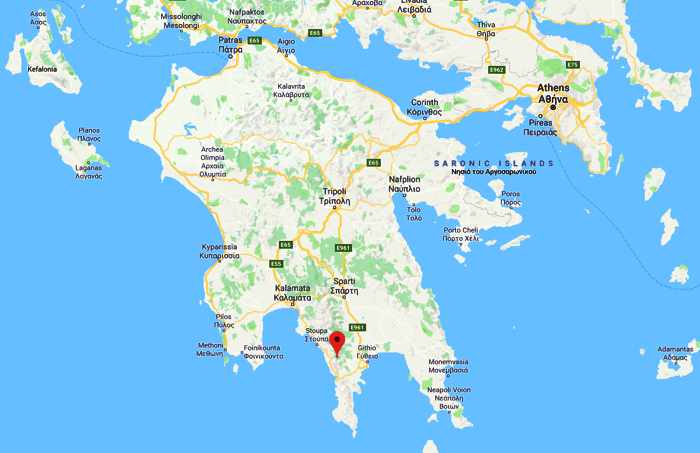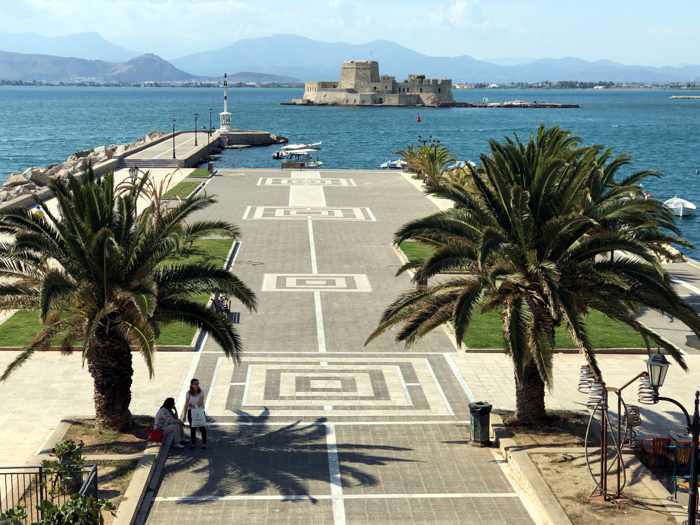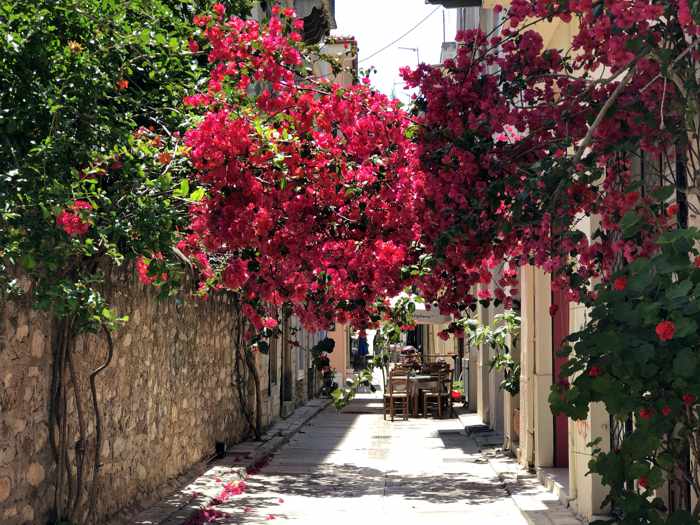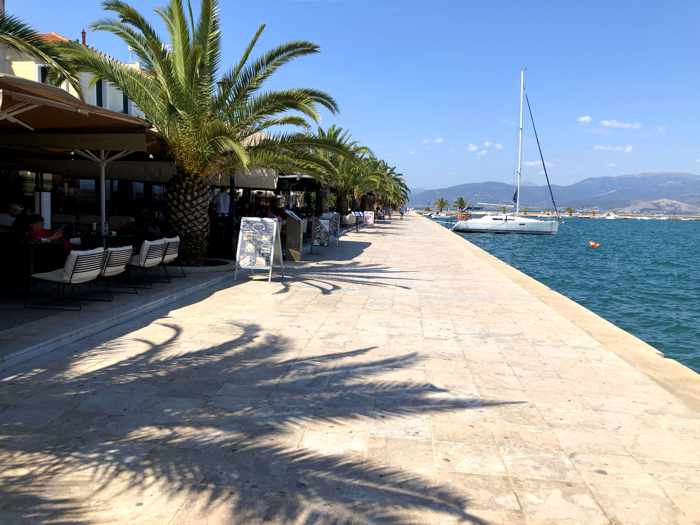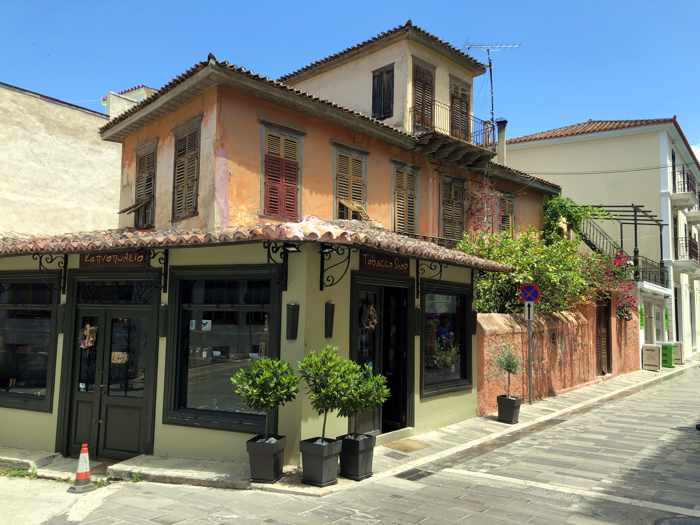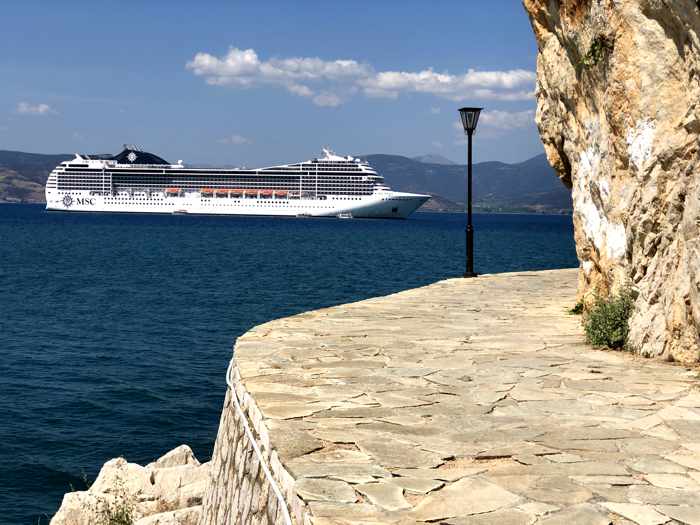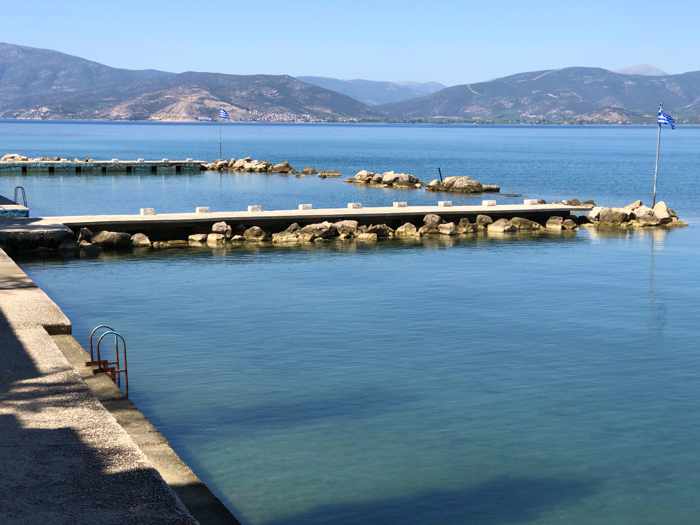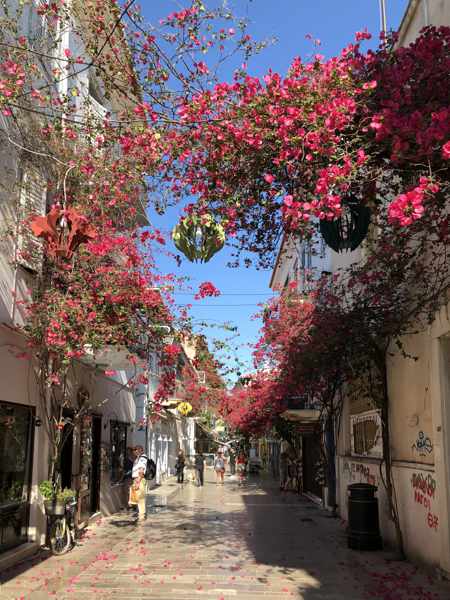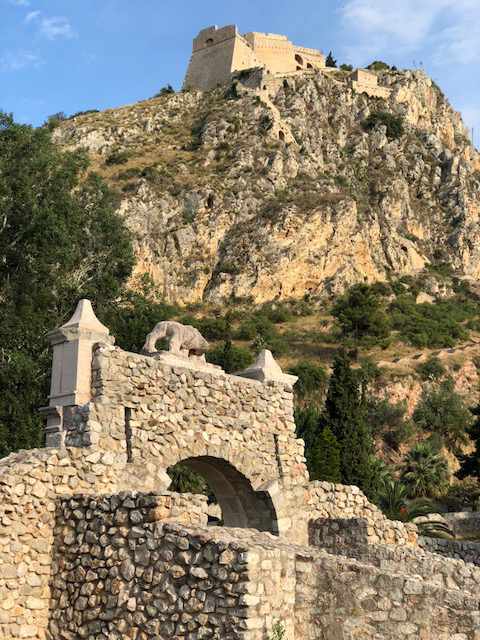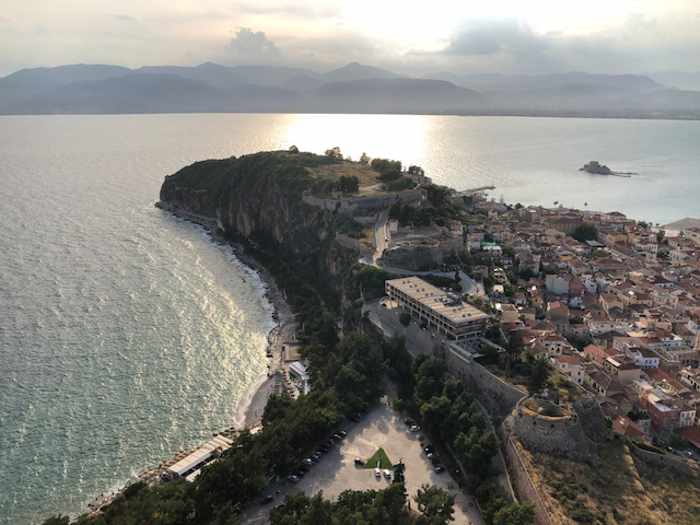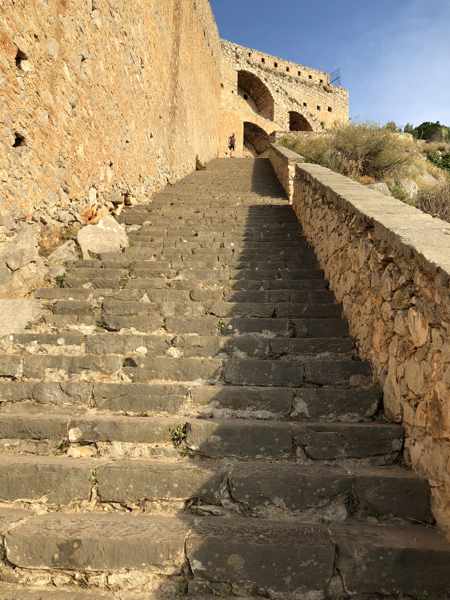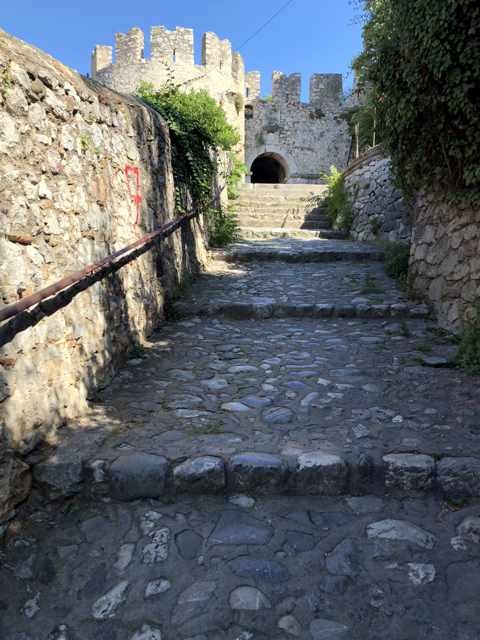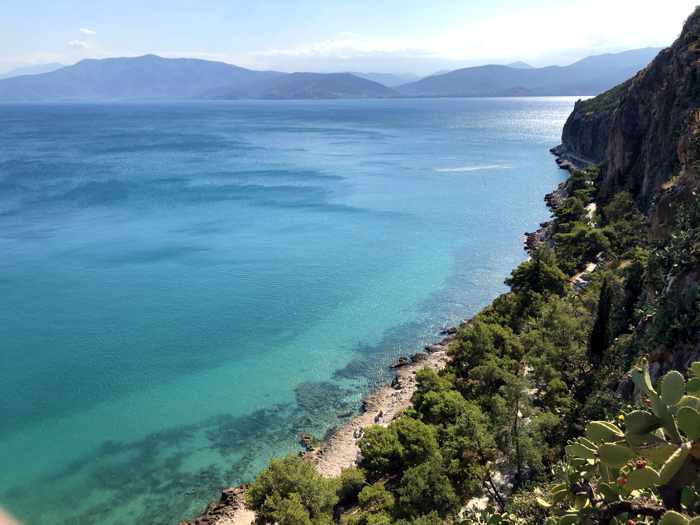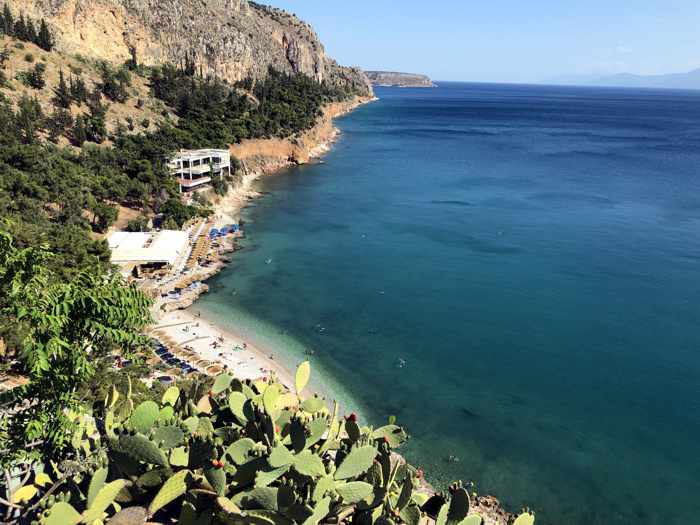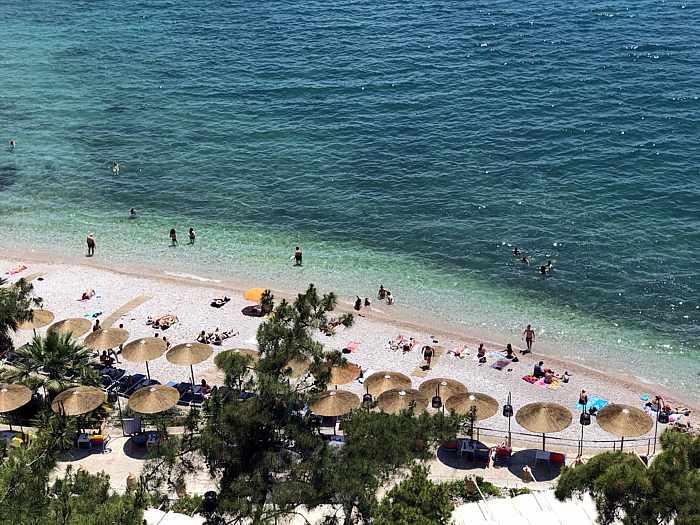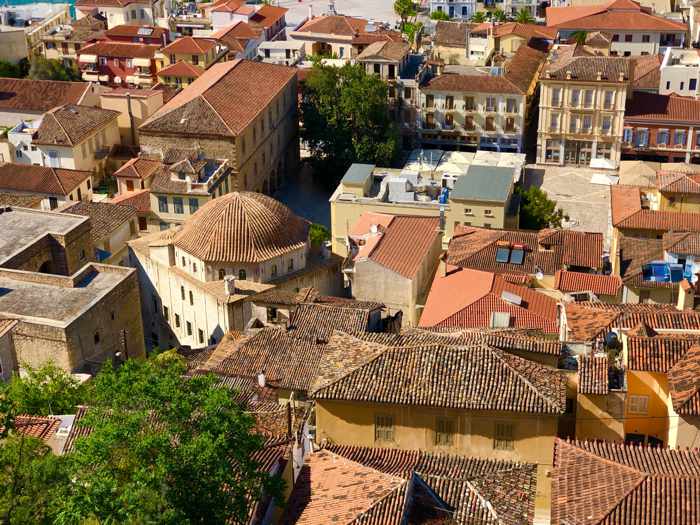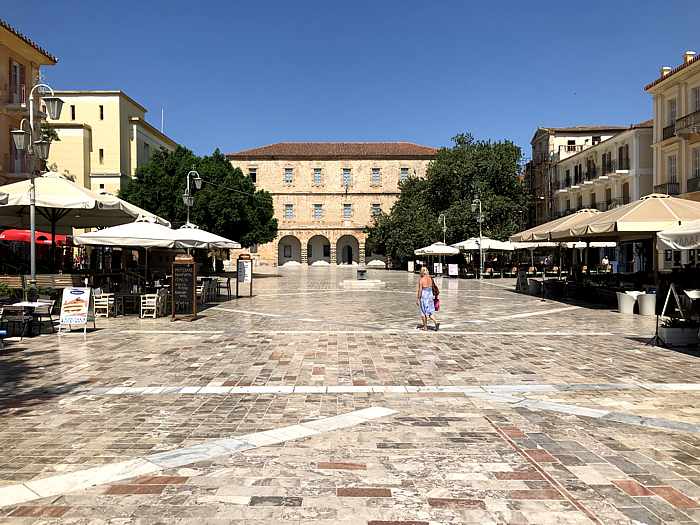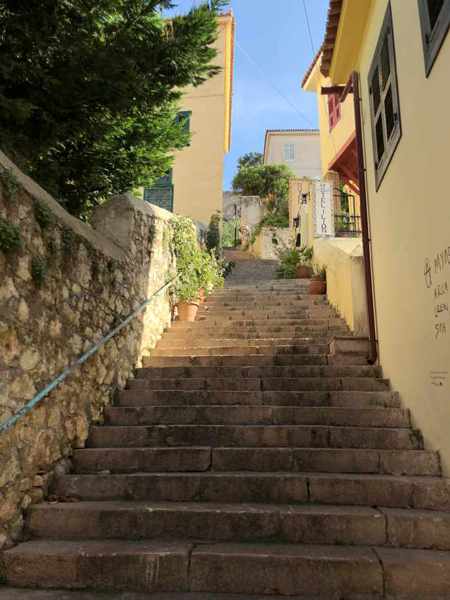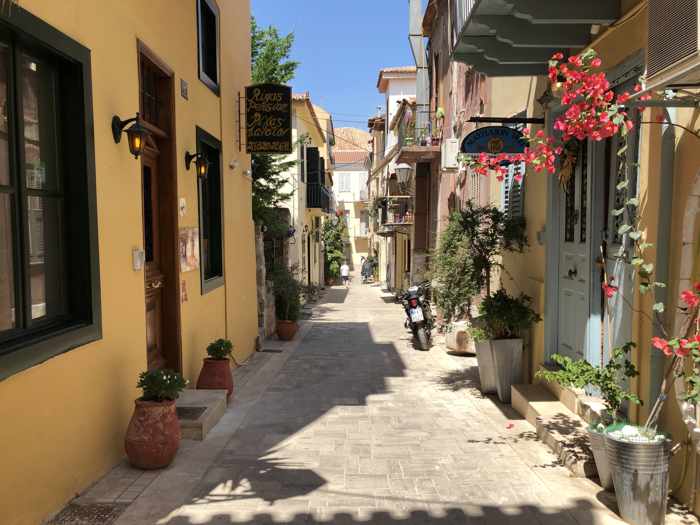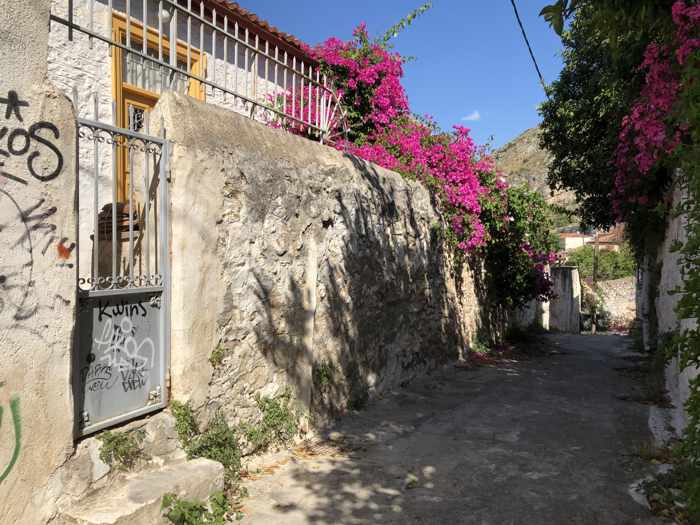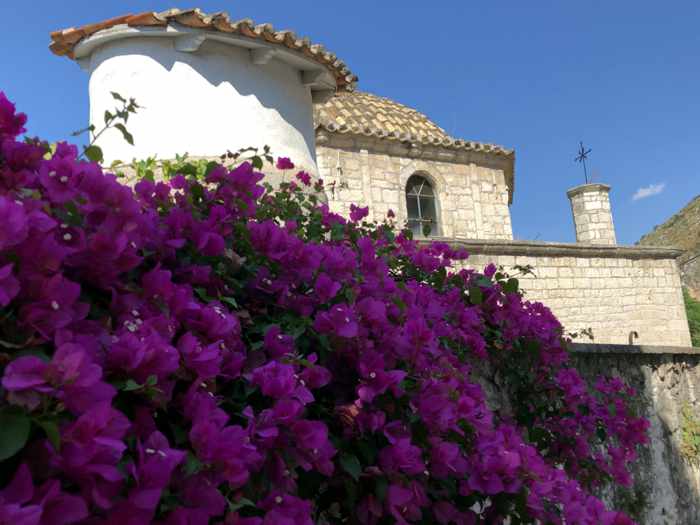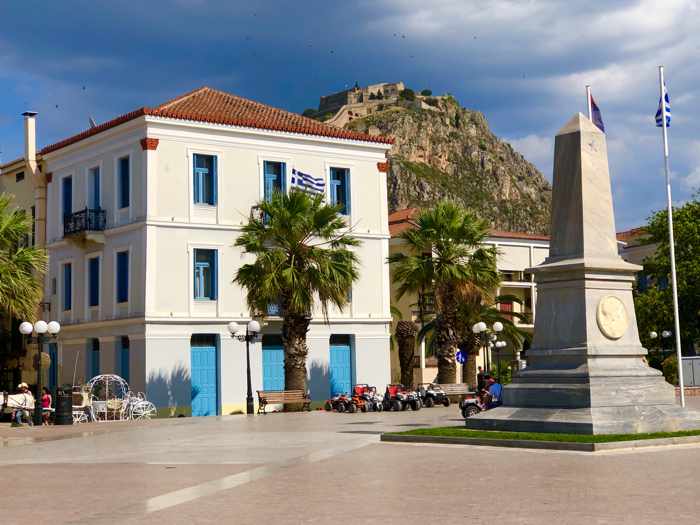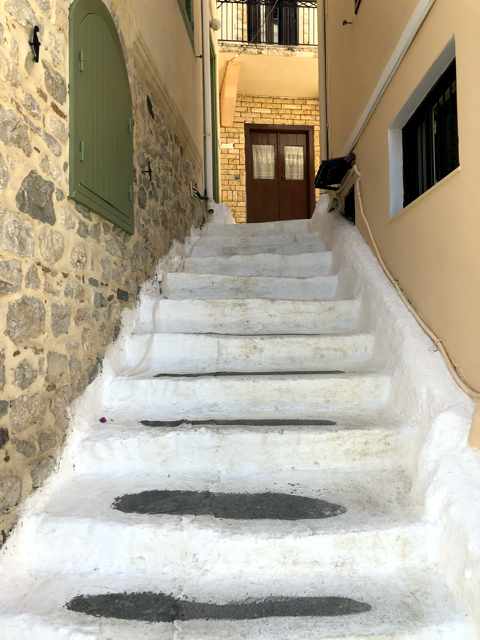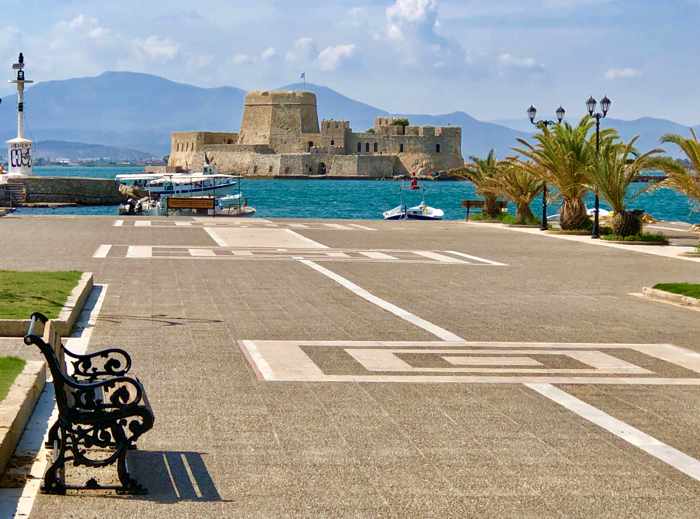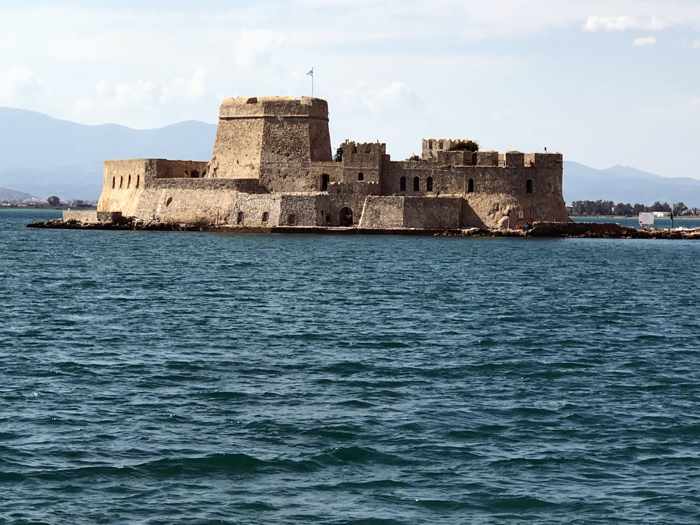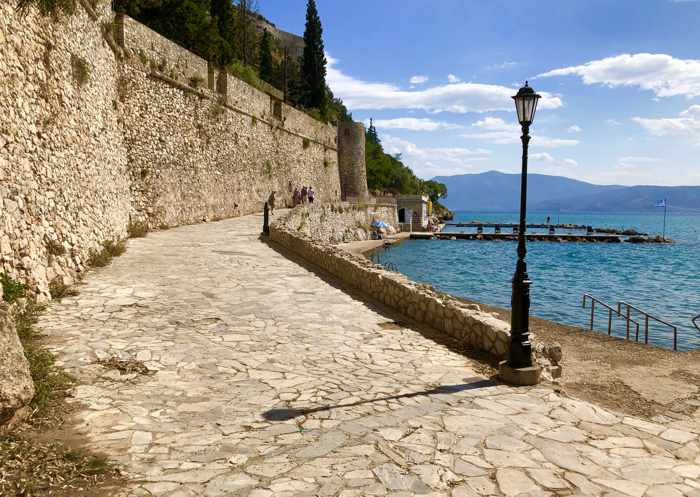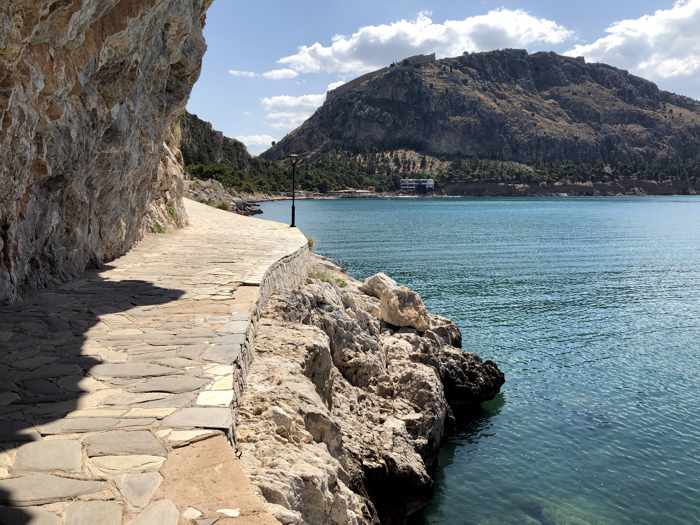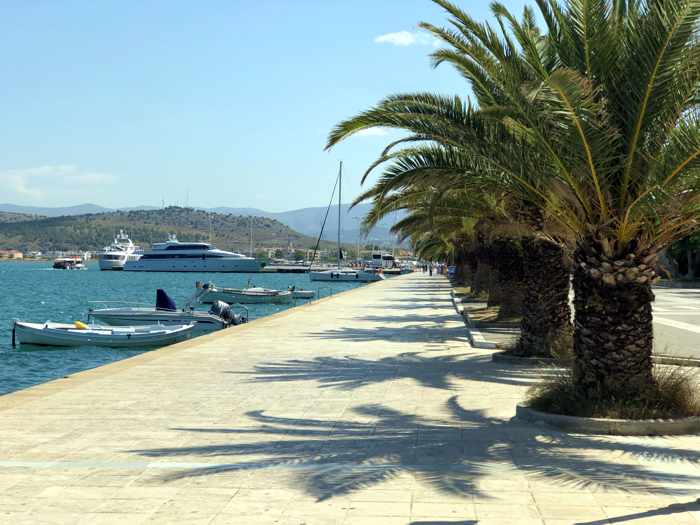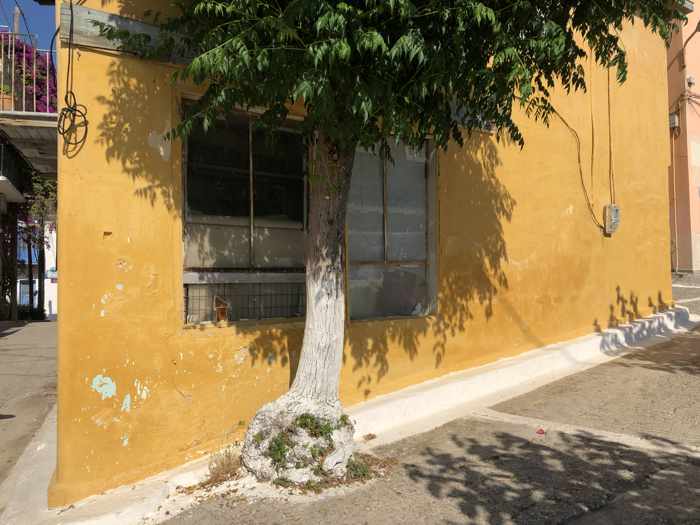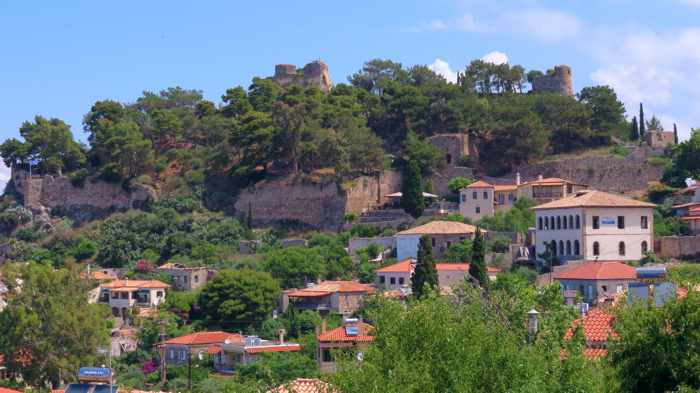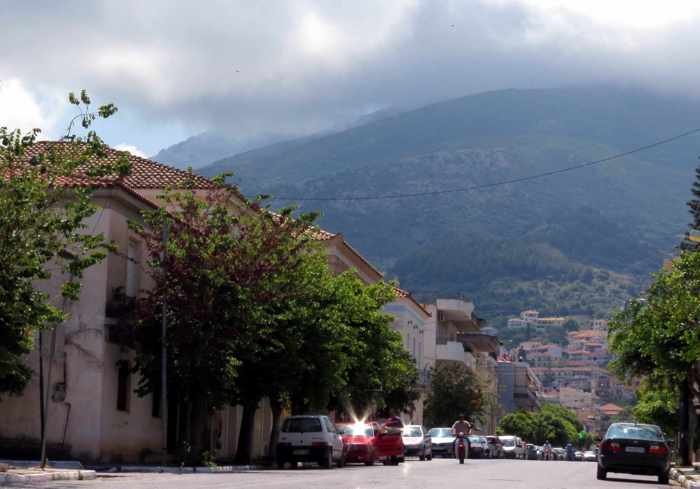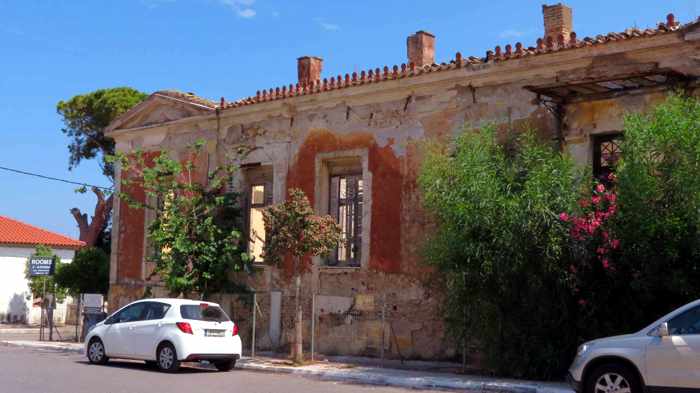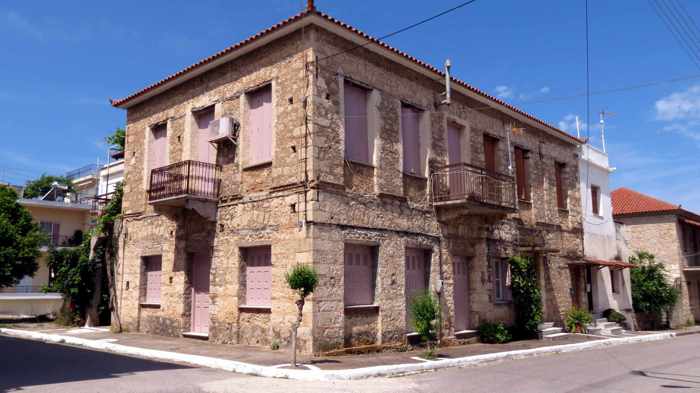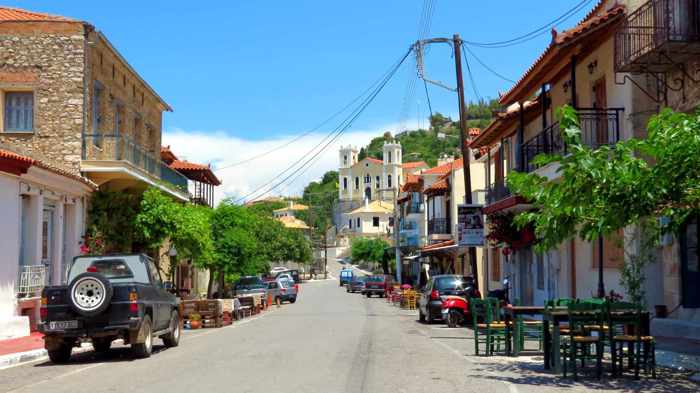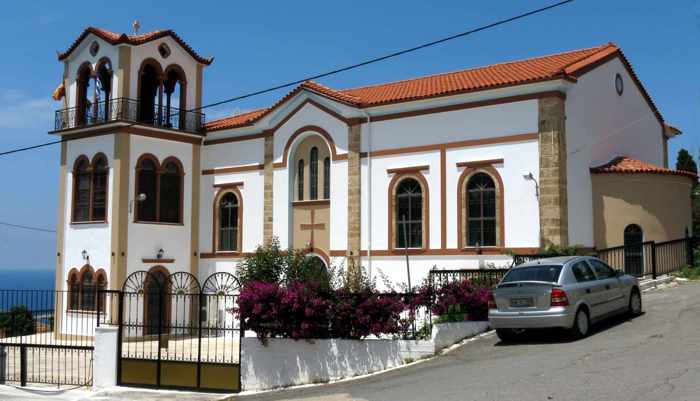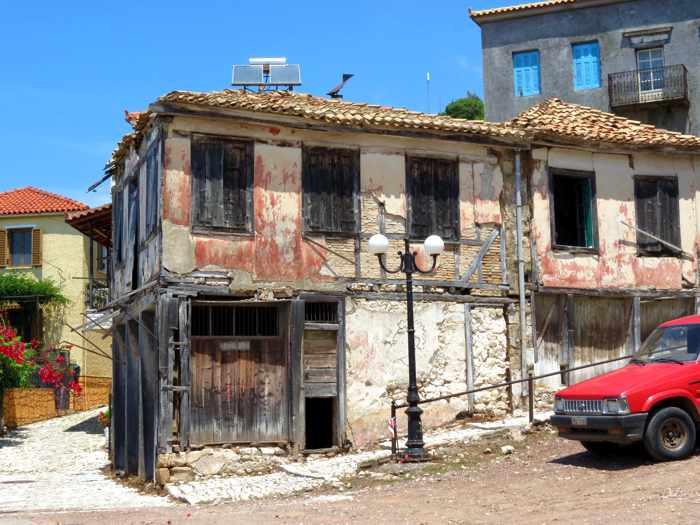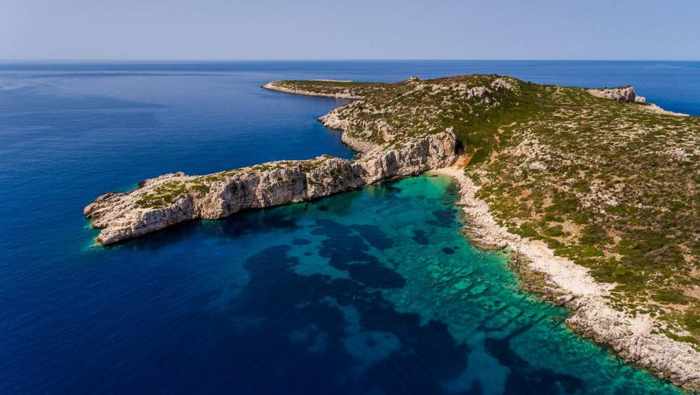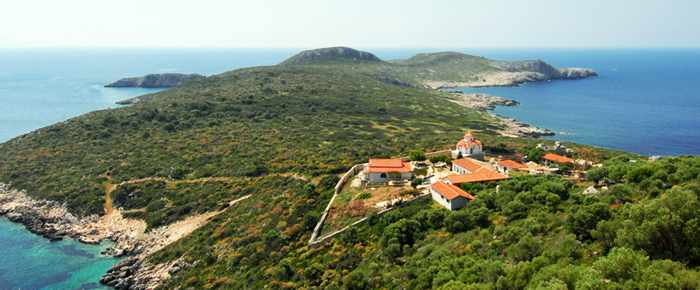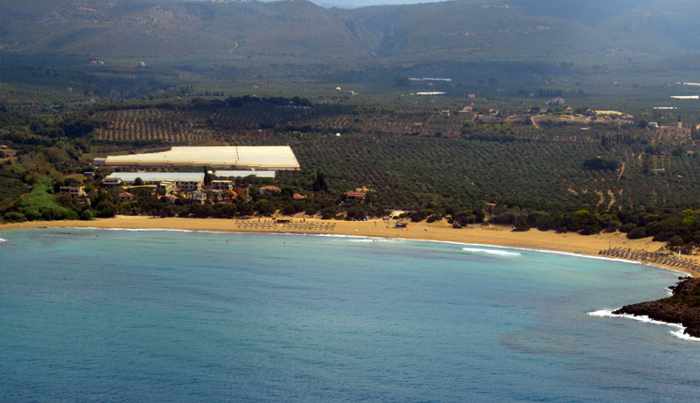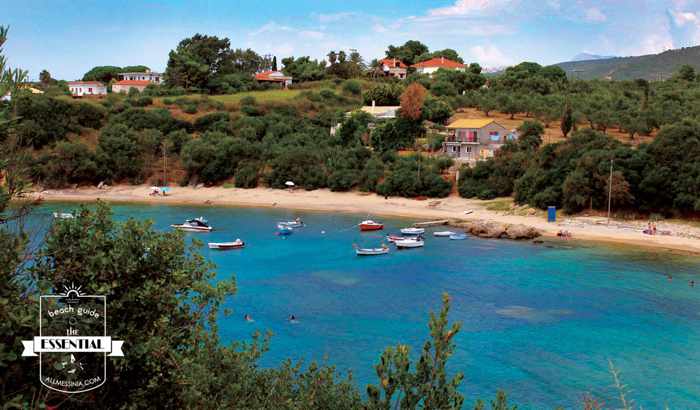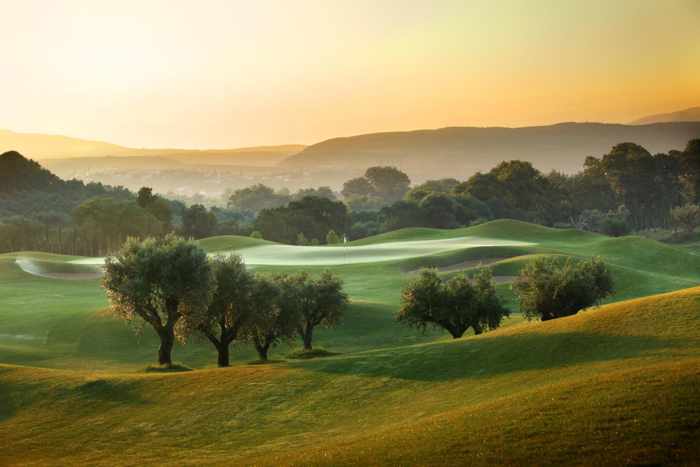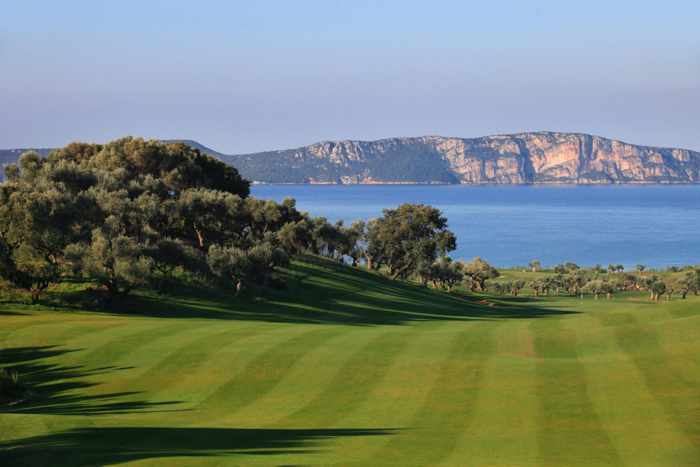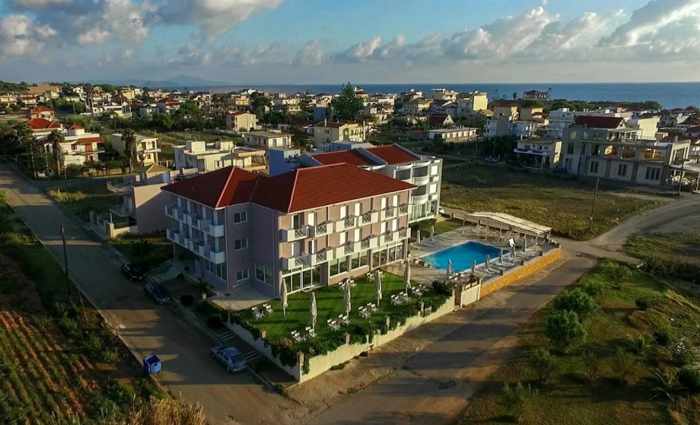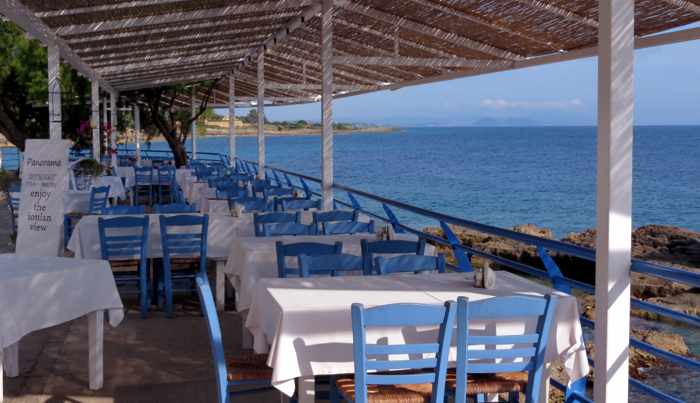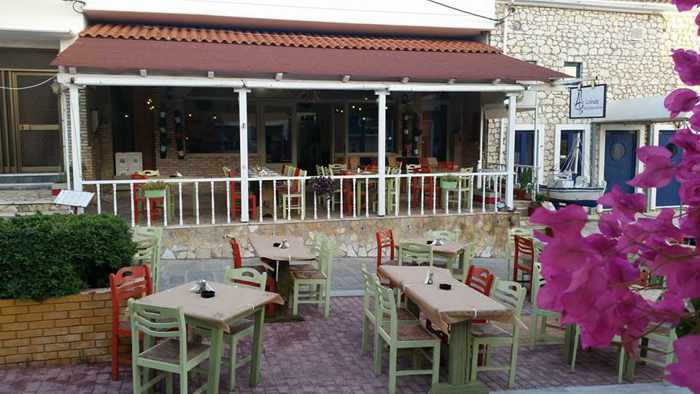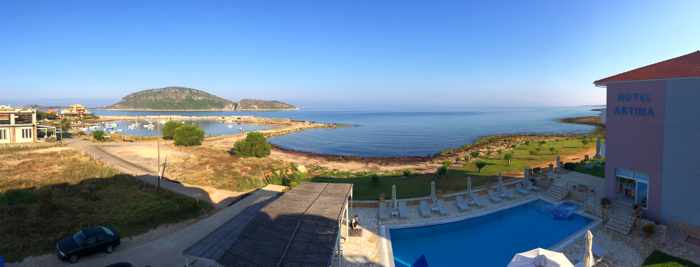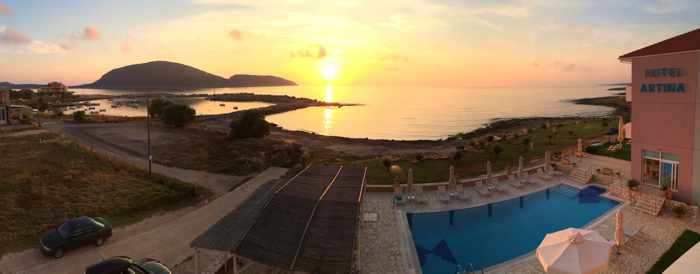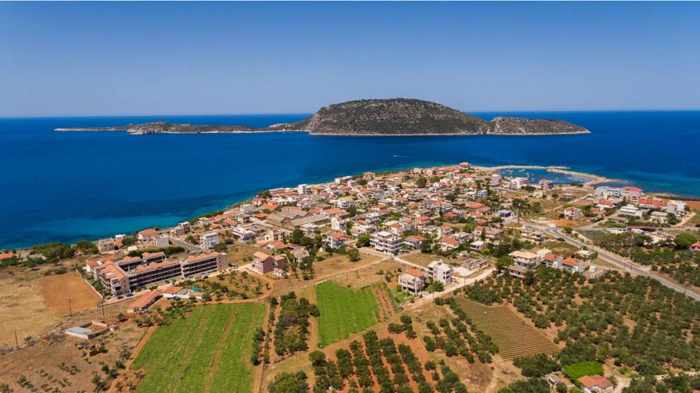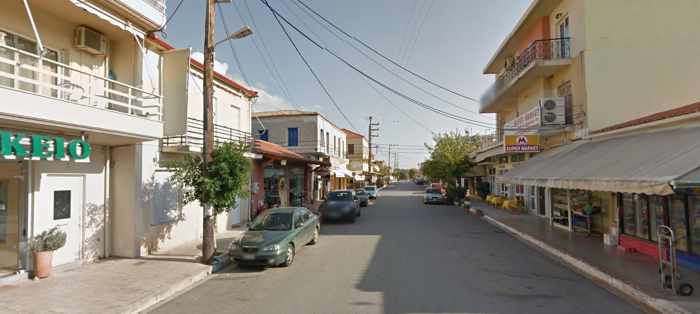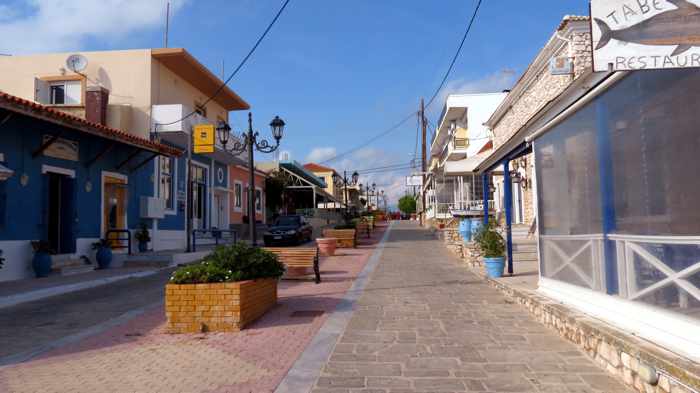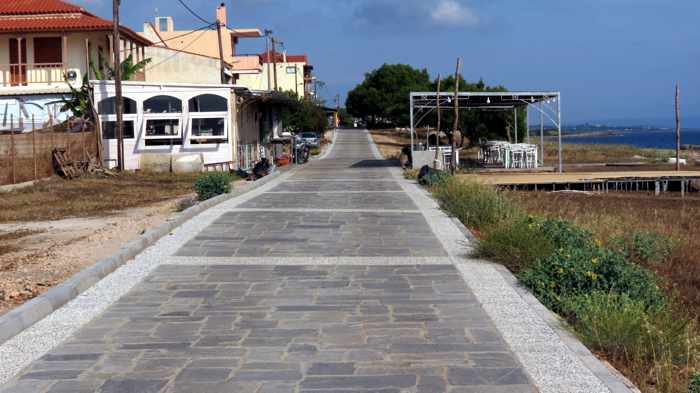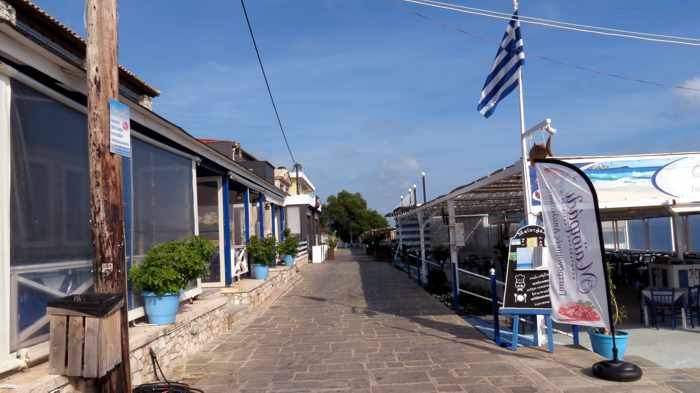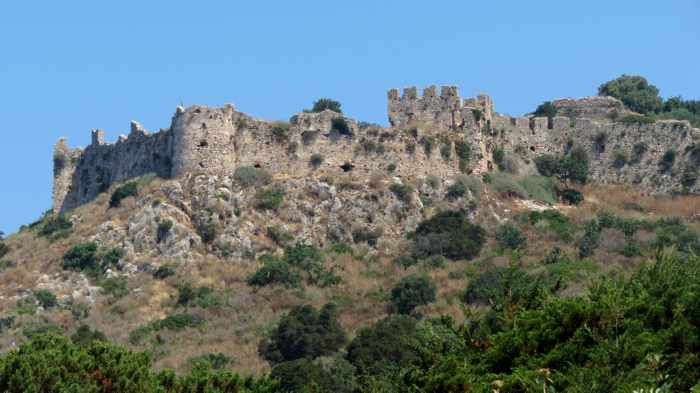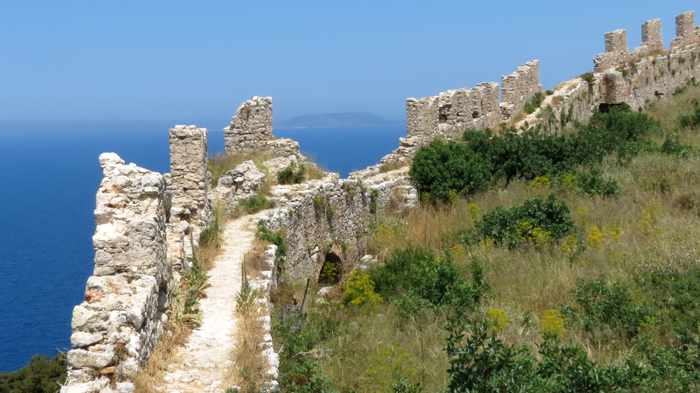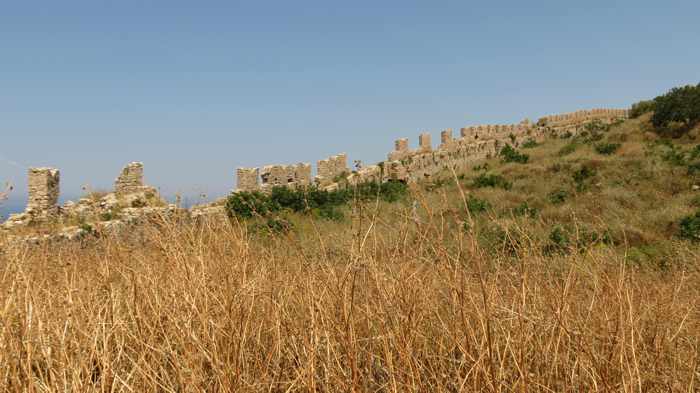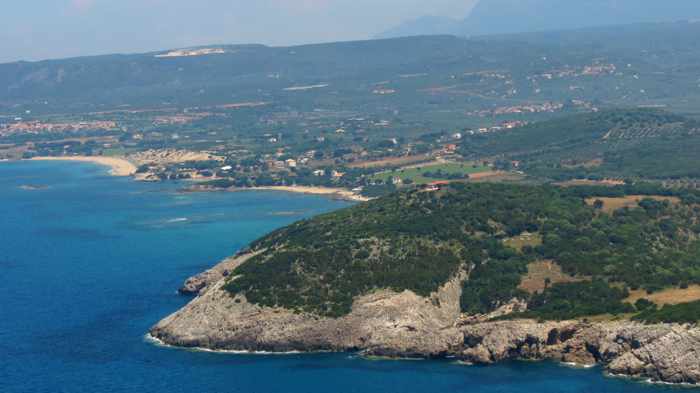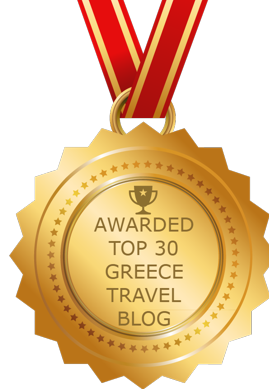
The Arvanitia promenade is a stone-paved walkway that winds along the seaside from Nafplio’s historic Old Town to Arvanitia beach 1 kilometer away

The sand and dirt path to Karathona beach begins near Arvanitia, and meanders southward along the Argonic Gulf coast. The walking distance between the two beaches is roughly 2.7 kilometers, about a 30- to 40-minute trek.

Boats docked in the north corner of Karathona Bay. From here, Karathona beach extends nearly 2 kilometers around the bay. It takes half an hour to walk from this spot to the south end of the beach.
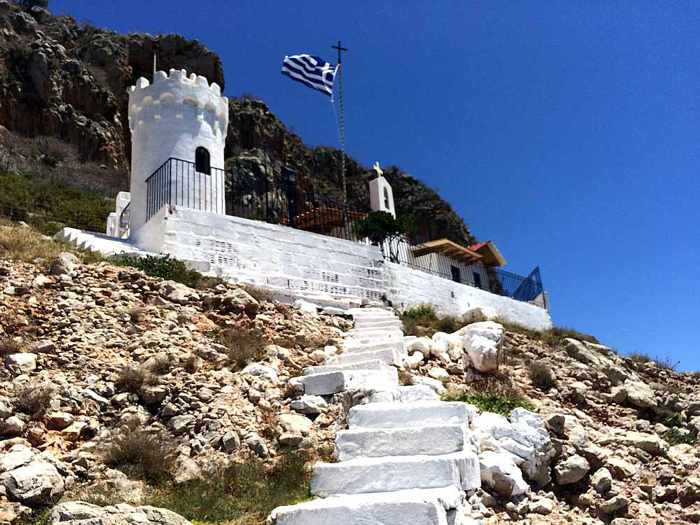
A separate, third trail leads from Karathona beach to Agios Nikolaos church, which sits on a windy slope above the sea. It’s a pleasant, short hike that’s worthwhile if you reach the south end of Karathona Bay and wish to view more coastal scenery before your return walk to Nafplio.
Wonderful walks: Nafplio is commonly called “one of the most beautiful towns in Greece,” and rightly so — its historic Old Town is one of the prettiest places we have seen during our travels to more than two dozen islands plus a wide variety of places on the mainland and in the Peloponnese.
With its picturesque alleys, lanes and streets, charming old buildings, impressive public parks and squares, myriad monuments and historic sites, and an extensive selection of restaurants, bars and shops, Nafplio is fascinating to visit, whether just on a daytrip or for several days or more.
Though the town itself is lovely, one of the features we personally love most about Nafplio is the surrounding natural scenery — an exhilarating expanse of rolling hills and mountains, rugged rocky peninsulas and shorelines, and captivating sea colours in the bays, beaches, coves and harbours that indent the Argolic Gulf coast.
Walking is the best way to observe and savour the marvellous scenery, and Nafplio boasts two wonderful seaside paths that rank among our favourite coastal walks in all of Greece — the Arvanitia promenade, and the footpath to Karathona beach. We make a point of walking at least one of the paths each day we are in Nafplio.

Aerial view of the Acronauplia peninsula’s south side. The Arvanitia promenade can be seen at the base of the rocky cliffs and is partially visible where it snakes through the line of trees above the shore. The walkway ends at a square above Arvanitia beach (bottom right).
The Nafplio Old Town is positioned on the northern slopes of Acronauplia, a thumb-shaped peninsula that juts into the Argolic Gulf (a body of water between the Arcadia and Argolida regions of the Peloponnese). The Arvanitia promenade begins at the Nafplio waterfront area known locally as The Shore, and curves around the western tip of Acronauplia, hugging the base of imposing steep cliffs covered in wide swaths of prickly pear and other cactus plants. The walkway ends at Arvanitia Square, a walking distance of approximately 1 kilometer. The town’s popular sunbathing and swimming spot, the stone and pebble Arvanitia beach, is a short downhill walk from the square.
The footpath to Karathona starts a mere stone’s throw beyond the Arvanitia beach entrance. As it meanders south, it passes above several coves and secluded inlets as well as the pebble and stone strands known as Neraki beach. The path is a favourite route for local residents to power walk, jog, cycle and exercise their dogs. At a casual pace, it takes about half an hour to walk the 2.7 kilometer distance to a small harbour at the northern tip of Karathona beach.
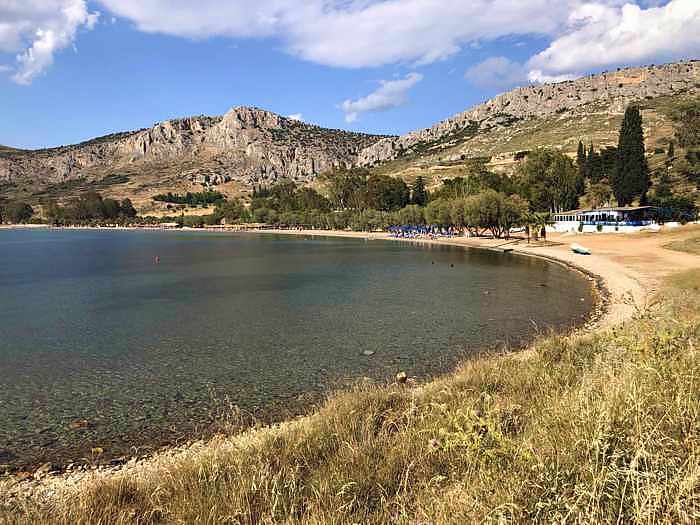
Beach view from the south side of Karathona Bay
Karathona is an exceptionally wide and gently curved beach that stretches nearly 2 kilometers — almost as long as the path from Arvanitia. While it has several sections organized with beach chairs, umbrellas and bars, there are plenty of wide-open spaces in between. There is another small harbour at the southern end of the beach, along with several houses and Agios Konstantinos Church. Across the road and parking area behind the houses is the starting point of yet another coastal path, this one a short, narrow trail that leads up and over a hill to the small whitewashed church of Agios Nikolaos. It takes less than 15 minutes to hike to the church, with superb views of the gulf and the mountainous coast of Arcadia throughout the trek (followed by excellent views of Karathona Bay and beach on the way back.)
Strolling the Arvanitia promenade is often suggested as a “must-do” activity for Nafplio visitors, and we certainly agree. But we recommend that walking enthusiasts also make the invigorating hike to Karathona and onward to take a quick look at Agios Nikoloas Church. These walks offer a great opportunity to get some exercise and fresh sea air while enjoying the tremendous views of coastal landscapes and the Argolic Gulf.

From the Arvanitia promenade, walkers can view two castles: the Bourtzi sea fortress, seen from a lookout spot above the Banieres swimming area …

… and the massive Palamidi castle on the peak high above Arvanitia beach, seen as evening sun casts a golden glow on the mountain
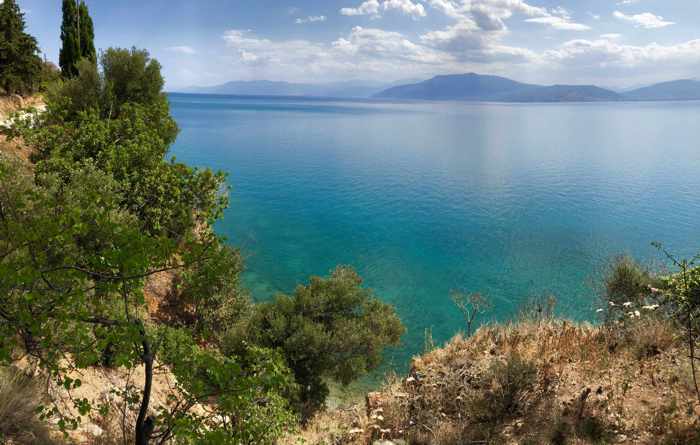
Both walking paths overlook alluring turquoise waters in the Argolic Gulf …

… exhilarating coastal landscapes …

… mountains in the Arcadia region of the Peloponnese to the west …
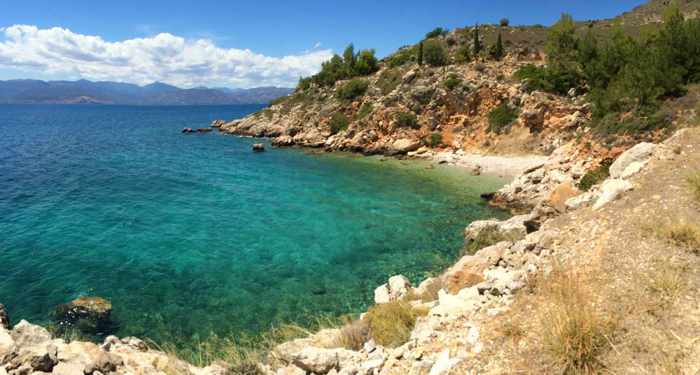
… pretty bays and quiet coves along the rugged shoreline …

… organized beaches, like Arvanitia, which offer bars, restaurants, lounge chairs and umbrellas …
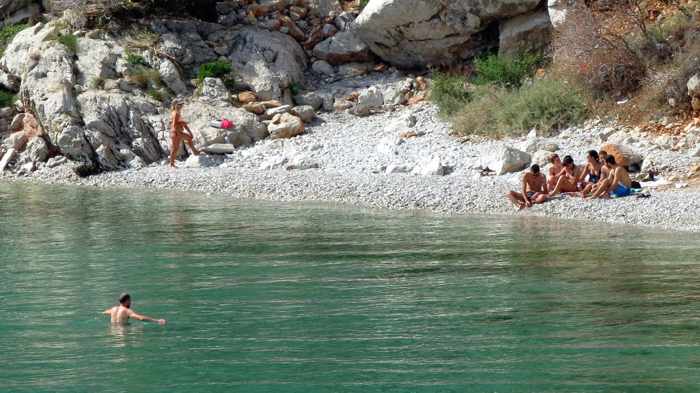
… and quieter beaches, like Neraki, with no facilities (or crowds)
Please click on the links below to continue reading and to see many more photos of the Arvanitia promenade, Arvanitia beach, the Karathona path, Karathona beach, the trail to Agios Nikolaos Church and of course the church itself.
Page 2 contains some general information about the walking routes, as well as photos of the Arvanitia promenade.
Page 3 features photos of the Karathona footpath and Karathona beach.
Page 4 has pictures of Agios Nikolaos Church and its access trail.
CONTINUED ON PAGE 2


